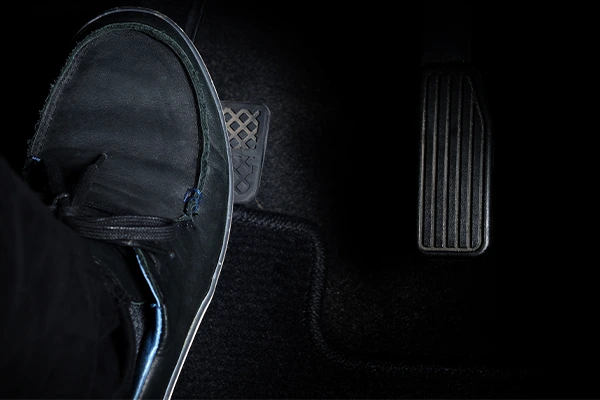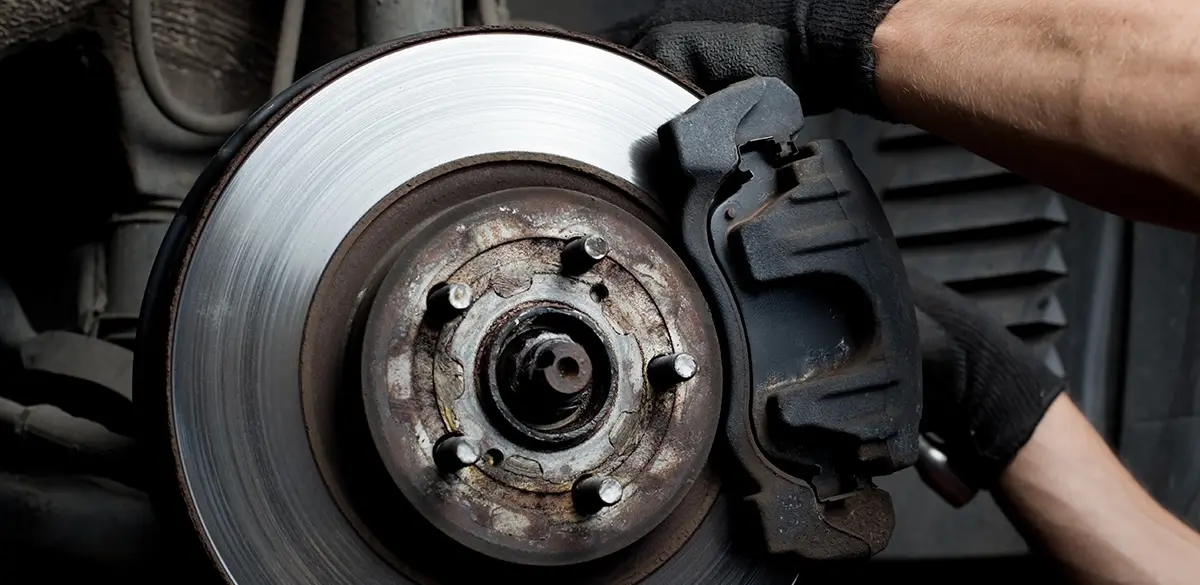A spongy brake pedal can be one of the most unsettling sensations for a driver. Instead of firm resistance when you press the pedal, you feel a soft, “mushy” response. This is a clear warning sign of a problem within your vehicle’s hydraulic braking system. Addressing it quickly is crucial for your safety.
Here is a troubleshooting guide to help you understand the common causes of a spongy brake pedal and what steps you can take to fix it.
What a Spongy Pedal Means
Your brake system is a sealed hydraulic circuit. When you press the pedal, it sends force through brake fluid to the calipers or wheel cylinders, which then engage the brake pads to slow or stop your car. Brake fluid is a non-compressible liquid. If anything disrupts that hydraulic pressure, your pedal will feel soft and spongy.
Common Causes and Troubleshooting
A spongy brake pedal typically indicates that air has entered the brake lines or that there is an issue with the brake fluid itself.
1. Air in the Brake Lines
- The Problem: Air can get into the brake lines during a brake fluid change or repair if the system isn’t bled properly. Unlike brake fluid, air is compressible. When you press the pedal, you compress the air bubbles instead of building pressure, resulting in a spongy feel.
- The Fix: You need to bleed the brake lines to force the air out. This process involves a trained technician pushing fresh brake fluid through the system to purge any trapped air. If the problem reappears, it may indicate a leak somewhere in the system.
2. Old or Contaminated Brake Fluid
- The Problem: Brake fluid is hygroscopic, meaning it absorbs moisture from the air over time. This moisture lowers the fluid’s boiling point. Under heavy braking, the fluid can heat up and boil, creating vapor bubbles. These bubbles, like air, are compressible and cause a spongy pedal.
- The Fix: Flush the old brake fluid from the entire system and replace it with new, high-quality fluid of the correct DOT rating for your vehicle. Most manufacturers recommend a brake fluid flush every two years.
3. Low Brake Fluid Level
- The Problem: A low fluid level, often due to a leak, can introduce air into the master cylinder or brake lines. This loss of fluid prevents the system from building adequate pressure.
- The Fix: Top off the fluid reservoir and then carefully inspect the entire braking system for leaks. Look for fluid on the ground beneath the car, or around the brake calipers, wheel cylinders, and brake lines. If you find a leak, a professional needs to repair the faulty component immediately.
4. Failing Master Cylinder
- The Problem: The master cylinder is the heart of the braking system. If its internal seals wear out, brake fluid can bypass the piston. This results in a loss of pressure and a pedal that feels soft and slowly sinks to the floor when you hold it down.
- The Fix: You cannot easily fix a failing master cylinder. A qualified mechanic must replace it with a new or professionally rebuilt unit.
5. Damaged or Swollen Brake Hoses
- The Problem: Over time, the rubber brake hoses connecting the steel lines to the calipers can deteriorate. They can crack or bulge under pressure, preventing the fluid from moving effectively. A swollen hose will not allow the full pressure to reach the caliper.
- The Fix: A visual inspection can often reveal a bulging hose. Have a mechanic check them. If a hose is damaged or swollen, they must replace it.
A Final Word on Safety
A spongy brake pedal is a critical safety issue. Never ignore it. While some fixes, like a brake fluid flush, are routine maintenance, a spongy pedal can indicate a more severe problem like a leak or a failing master cylinder. If you notice your brake pedal feels soft or sinks to the floor, do not continue driving. Instead, have your vehicle inspected by a professional mechanic immediately to ensure your safety on the road.



